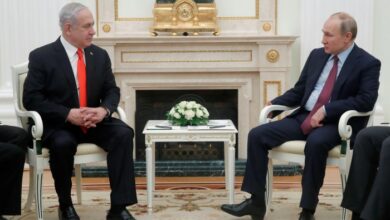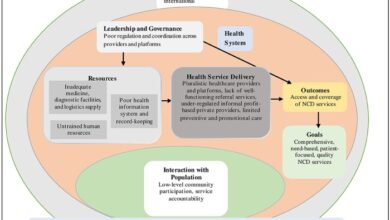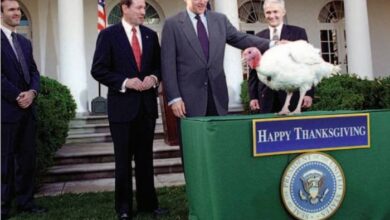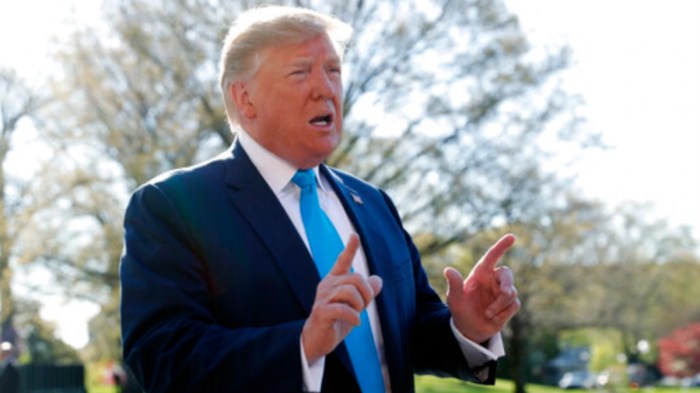
Trump increasingly asks Supreme Court to overrule judges, igniting a debate about the balance of power between the executive and judicial branches. This complex issue has deep historical roots, echoing past presidential attempts to influence the court’s decisions. From judicial appointments to potential overruling, the implications for the future of the American judicial system are substantial. This investigation delves into the legal arguments, political reactions, and potential outcomes of this controversial push.
The historical context reveals a recurring pattern of presidents seeking to shape the Supreme Court’s interpretation of the law. This analysis will explore the legal justifications underpinning Trump’s position, contrasting them with opposing arguments. We will also examine the political fallout, considering the potential impact on both Republican and Democratic strategies. Further, public perception and the potential long-term consequences of such actions will be scrutinized.
Historical Context of Supreme Court Challenges
The Supreme Court’s role as the final arbiter of legal interpretation has always been a source of political tension. Presidents, recognizing the Court’s influence on policy, have historically sought to shape its direction, often through appointments and, less directly, through public pronouncements. This ongoing dynamic has implications for the Court’s independence and the balance of power within the American system.Understanding past attempts to influence the Court illuminates the current situation.
The strategies employed, the political context, and the eventual impact on judicial decisions offer crucial insights into the complexities of this ongoing debate. Examining historical precedent provides a framework for evaluating the present moment and considering potential outcomes.
Previous Presidential Attempts to Influence the Court
Presidents have employed various strategies to influence Supreme Court decisions, often aiming to appoint justices who align with their political views. This process has significant implications for the Court’s future direction.
- Appointments and Judicial Philosophy: Throughout history, presidents have actively sought to appoint justices who reflect their political and legal philosophies. This approach, while seemingly straightforward, can lead to prolonged political battles, as exemplified by the contentious confirmations of certain justices. The appointments can set a precedent for future rulings on various issues, from civil rights to economic policy. Examples include the appointments of justices under the Roosevelt administration and more recent appointments, which have been met with both praise and criticism, impacting the Court’s trajectory.
- Public Statements and Pressure: Presidents have used public statements and other forms of pressure to express their views on pending cases or desired judicial outcomes. These pronouncements, while not legally binding, can create public pressure and influence the justices’ deliberations, potentially affecting the decisions themselves. This can be seen in statements made during times of political polarization and disagreement on landmark cases.
The impact of such statements varies, but they remain a factor in the complex dynamics surrounding the Supreme Court.
Historical Precedents for the Current Situation
Examining past instances of presidential pressure on the Supreme Court reveals a pattern of varying degrees of direct and indirect influence. While the specific methods and circumstances may differ, the underlying tension between the executive and judicial branches remains a constant.
| Historical Period | Presidential Actions | Supreme Court Response | Key Differences/Similarities to Current Situation |
|---|---|---|---|
| Early 20th Century | Presidents sought to appoint justices aligned with their policies. Public pressure also played a role. | Justices rendered decisions based on legal interpretations and precedents. | While appointments remain a focus, the level of public discourse and the media’s role are more prominent now. |
| Mid-20th Century | Presidential actions on judicial appointments and public statements were more pronounced. | The Court continued to make decisions based on legal arguments and precedents. | The current climate is characterized by heightened political polarization and social media, potentially amplifying the impact of public pressure. |
| Recent Decades | Appointments and public statements have been highly politicized. | The Court’s decisions have often been highly contested. | The current situation highlights an increase in direct political pressure on the Court and a greater public awareness of the Court’s decisions. |
Comparison of Historical Actions and Current Situation
This table provides a concise overview of how historical presidential actions regarding the Supreme Court have evolved, highlighting the similarities and differences to the current situation. It emphasizes the persistent tension between the executive and judicial branches and the changing context in which this tension unfolds. The modern era presents a unique set of circumstances, with heightened media attention and public engagement, potentially influencing the justices’ decisions.
Legal Arguments and Justifications: Trump Increasingly Asks Supreme Court To Overrule Judges
Trump’s repeated calls for the Supreme Court to overrule lower court judges raise complex legal questions about judicial independence and the separation of powers. These actions spark debate about the proper role of the judiciary in a democratic society and the extent to which the highest court should intervene in cases already adjudicated by lower courts. The arguments surrounding these interventions are multifaceted and involve competing interpretations of legal precedent, constitutional principles, and the nature of judicial review.The legal landscape surrounding these interventions is fraught with potential ramifications for the future of the American justice system.
Understanding the arguments for and against such interventions is crucial to grasping the complexities of this ongoing debate.
Legal Arguments Supporting Trump’s Position
Trump’s supporters often argue that lower court decisions are flawed or violate established legal principles. They may cite specific precedents or constitutional interpretations to support their position. A key argument may involve a perceived bias or political motivations in the decisions of lower courts. This argument asserts that these biases lead to unjust outcomes, necessitating Supreme Court intervention.
Such arguments could be bolstered by presenting evidence of procedural errors, misinterpretations of statutes, or a demonstrable pattern of biased rulings.
Legal Arguments Opposing Trump’s Position
Opponents of Trump’s position emphasize the principle of judicial independence. They contend that the Supreme Court should not overturn lower court decisions unless there are clear and significant legal errors. Furthermore, they highlight the importance of respecting the established legal process, which involves appeals through the court system. This perspective emphasizes the potential for abuse of power and the disruption of the established legal order if the Supreme Court intervenes too readily in lower court rulings.
They would likely cite examples where Supreme Court intervention has had unintended negative consequences, disrupting established legal principles.
Trump’s increasing requests to the Supreme Court to overrule lower court judges are raising eyebrows. It’s a fascinating dynamic, and reminds me of the importance of appreciating nature’s creatures. For instance, learning about the vital role snakes play in our ecosystem on Earth Day is incredibly insightful. Earth Day snakes lessons can help us understand how these creatures contribute to a healthy environment.
Ultimately, the Supreme Court’s response to Trump’s requests will likely have far-reaching consequences for the legal landscape.
Potential Ramifications of Supreme Court Overrulings
Overruling lower court judges on a case-by-case basis could potentially undermine the integrity and legitimacy of the entire judicial system. It might lead to a lack of confidence in the fairness and consistency of the courts. This erosion of public trust could have long-term consequences, affecting public confidence in the legal system as a whole. Further, it could create a precedent for political interference in judicial matters, potentially leading to a more politicized judiciary.
Comparison of Arguments
The arguments supporting and opposing Trump’s position present contrasting views on the appropriate role of the Supreme Court in the judicial process. Proponents emphasize the need for correcting perceived errors and upholding legal principles. Conversely, opponents stress the importance of judicial independence and the established legal process. The strength of each side’s argument lies in the evidence presented, the interpretation of legal precedents, and the perceived motivations behind the interventions.
Key Legal Precedents and Arguments
| Precedents/Arguments | Supporting Trump | Opposing Trump |
|---|---|---|
| Marbury v. Madison (1803) | Establishes judicial review, implying the Court’s right to correct errors. | Focuses on the principle of judicial review within the established legal framework. |
| United States v. Nixon (1974) | Illustrates the Court’s power to enforce its rulings. | Highlights the importance of upholding the established process. |
| Specific Cases of Lower Court Decisions | Highlighting alleged errors or biases. | Emphasizing the proper channels for appeal and the independence of lower courts. |
Political Implications and Reactions
Trump’s escalating requests for the Supreme Court to overturn rulings made by lower courts carry significant political weight, potentially reshaping the landscape of American politics. These actions aren’t just legal maneuvers; they are deeply intertwined with political strategy, aiming to influence public opinion and garner support from specific constituencies. The potential ramifications for both Republican and Democratic parties are substantial, with ripples likely extending to future elections and the overall tone of political discourse.
Ramifications for the Republican Party
The Republican Party faces a complex challenge. Appealing to its base, particularly those who feel that the courts are biased against them, may be seen as politically advantageous in the short term. However, this strategy risks alienating moderate voters and potentially damaging the party’s long-term image. The perception of a party increasingly beholden to partisan political goals over legal precedent could alienate potential allies and damage their credibility.
Furthermore, the party could face accusations of undermining the rule of law, which could be damaging to their image and could create distrust in the legal system.
Ramifications for the Democratic Party
The Democratic Party is likely to frame these actions as an attack on the integrity of the judicial system and a threat to democratic principles. This approach can resonate with their base, strengthening their resolve and mobilizing support. However, they need to carefully avoid appearing to be overly critical of the Supreme Court, as this could alienate moderate voters and could create an image of division.
The Democratic Party could also capitalize on the opportunity to highlight the contrast between the two parties’ approaches to the judiciary.
Potential Impact on Future Elections
The way these actions play out in the coming election cycles will depend heavily on public reaction. A perceived erosion of faith in the judiciary could shift voter sentiment, potentially impacting voter turnout and support for candidates. The issues raised by these court challenges, including questions of judicial independence and the balance of power, are likely to become major themes in the election campaigns.
For instance, if voters perceive a pattern of interference in the judiciary, they might be less inclined to trust candidates or policies associated with such actions.
Reactions from Interest Groups
Various interest groups will react to these developments. For example, pro-life groups may see this as a positive step towards their goals, while pro-choice groups may perceive it as a threat to their rights. Economic groups might react based on how the actions affect their industries or financial interests. These reactions will be multifaceted and diverse, mirroring the complexities of American society.
Trump’s increasing requests to the Supreme Court to overrule judges are certainly raising eyebrows. It’s a fascinating development, especially when considering the current political climate and recent events, like the tragic death of journalist Fatma Hassona in Gaza, fatma hassona israel killed journalist gaza. This underscores the importance of independent judicial systems and the need for checks and balances, highlighting the potential repercussions of such court overruling attempts.
Increased Political Polarization
The continued emphasis on court challenges and rulings as a political battleground will almost certainly lead to heightened political polarization. This could manifest in increased animosity between political factions, creating a climate of mistrust and hindering productive dialogue. The potential for increased political polarization is significant. For instance, past political conflicts, like those surrounding the Affordable Care Act, demonstrate how legal challenges can exacerbate political divides.
Anticipated Responses from Political Factions
| Political Faction | Anticipated Response |
|---|---|
| Conservative Republicans | Support for Trump’s actions, framing them as necessary to protect conservative values. |
| Moderate Republicans | Mixed reactions, potentially expressing concerns about the impact on the rule of law and party image. |
| Democrats | Strong opposition to Trump’s actions, highlighting the threat to judicial independence and democratic principles. |
| Libertarians | Mixed reactions, potentially concerned about the potential for overreach by the judiciary or the executive branch. |
Public Perception and Impact
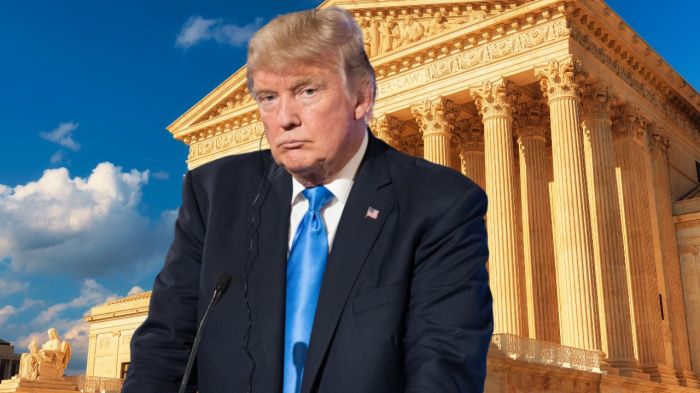
Trump’s repeated calls for the Supreme Court to overturn lower court rulings are likely to generate significant public debate and concern. The potential for the court to overrule established precedents carries profound implications for the nation’s legal framework and the public’s trust in the judiciary. This action could be perceived as a political maneuver rather than a purely legal one, influencing public opinion in ways that could affect future elections and judicial appointments.The public’s response to such actions will likely be varied and complex, influenced by pre-existing political leanings and interpretations of the legal arguments.
The perception of the Supreme Court’s impartiality will be a crucial factor in shaping public reaction, with potential long-term consequences for the nation’s political landscape.
Trump’s increasing requests to the Supreme Court to overturn judges’ decisions seem quite aggressive. This comes at a time when China is retaliating with a significant move, imposing tariffs on all US imports. This action from China, detailed in this article , could be a contributing factor to the escalating pressure on the court. Ultimately, Trump’s actions on the court remain a focal point in the current political climate.
Likely Public Perceptions
The public’s reaction to Trump’s actions will be largely determined by their existing political views. Supporters may see this as a necessary step to correct perceived judicial errors, while critics will likely view it as an attempt to undermine the rule of law and the independence of the judiciary. The framing of the issue by political commentators and news outlets will also play a crucial role in shaping public perception.
Potential Reactions to Judge Overturning
The public’s reaction to the potential overturning of judges’ decisions will likely be highly polarized. Supporters of the action might see it as a correction of perceived injustices or a return to a preferred legal interpretation. Conversely, opponents may view it as a dangerous attack on the integrity of the judiciary and the impartiality of the legal system.
The level of public outrage could be substantial, potentially leading to protests and demonstrations.
Impact on Public Trust in the Judicial System
A perceived overreach by the Supreme Court, driven by political pressure, could significantly erode public trust in the judicial system. This erosion of trust could have long-lasting consequences, affecting public confidence in the legal process and potentially influencing voter turnout and participation in legal proceedings. Historically, similar actions have led to a decline in public confidence in the institutions responsible for upholding the law.
Long-Term Consequences for Public Opinion
The long-term consequences of these actions on public opinion could be substantial. A perception of political interference in judicial decisions could lead to a decline in public trust in both the court and the political process. This could affect voter behavior and political participation, potentially leading to increased polarization and societal division. The impact could be seen in future elections and influence on future judicial appointments.
Potential Public Reactions and Reasons
| Potential Public Reaction | Reasoning |
|---|---|
| Support for Trump’s actions | Belief that the courts are making incorrect decisions, that the ruling will correct perceived injustices, or that the court needs to be more responsive to public opinion. |
| Opposition to Trump’s actions | Concern that the court is being used for political purposes, that the rulings undermine the integrity of the judicial system, or that the action is an attack on established legal precedent. |
| Mixed or neutral reaction | Uncertainty about the implications, differing opinions on the merits of the legal arguments, or lack of strong feelings about the issue. |
| Increased political polarization | The controversy could deepen existing divisions and lead to more intense political conflict. |
Potential Outcomes and Future Scenarios
The Supreme Court’s potential decision on Trump’s requests for overruling judges presents a critical juncture. The outcome could significantly reshape the American judicial landscape and influence future presidential actions. This analysis explores various scenarios, highlighting the potential ramifications of a ruling in favor of or against the former president.The Supreme Court’s interpretation of the legal arguments surrounding these requests will have far-reaching implications, impacting the balance of power between the executive and judicial branches of government.
This decision will likely spark intense debate and potentially influence future legal challenges involving presidential actions.
Possible Outcomes of the Supreme Court’s Decision
The Supreme Court’s decision on Trump’s requests could lead to several outcomes, each with different implications for the future of the American judicial system and presidential conduct. Understanding these potential paths is crucial for assessing the long-term consequences.
- A ruling in favor of Trump’s requests: This outcome could potentially set a precedent allowing future presidents to more readily challenge judicial appointments and rulings perceived as politically motivated. It could also embolden future executive actions, impacting the independence of the judiciary and potentially creating a more politically charged environment for judicial appointments.
- A ruling against Trump’s requests: This would reinforce the principle of judicial independence and the separation of powers. It could deter future presidents from attempting similar actions, emphasizing the limitations on executive power in relation to the judiciary. This could potentially restore a degree of confidence in the impartiality of the court system.
- A nuanced ruling: The Court might issue a decision that acknowledges certain aspects of Trump’s arguments while rejecting others, setting a more specific precedent for future cases. This outcome could lead to a more nuanced and complex understanding of presidential powers in relation to judicial appointments, potentially leading to further legal challenges and debates.
Potential Consequences for the Future of the American Judicial System, Trump increasingly asks supreme court to overrule judges
The Supreme Court’s decision will significantly impact the future of the American judicial system, potentially affecting the balance of power between the branches of government. This could include challenges to the principle of judicial independence, and a change in the approach to future presidential actions.
- Erosion of Judicial Independence: A ruling in favor of Trump’s requests could potentially weaken the perception of judicial independence, making judges more susceptible to political pressure. This could lead to a decrease in public trust in the judiciary, as seen in past instances where the judiciary has faced scrutiny.
- Increased Political Polarization: The outcome of the Supreme Court decision could further intensify political polarization in the United States. Different interpretations of the ruling will lead to divergent political viewpoints, impacting public discourse and potentially affecting future elections.
- Future Presidential Actions: The Supreme Court’s decision could influence future presidential actions. A ruling in favor of Trump could embolden future presidents to take similar actions in response to judicial appointments or rulings, potentially leading to an escalation of such challenges. Conversely, a ruling against Trump could set a precedent to discourage such actions in the future.
Implications for Future Presidential Actions
The Supreme Court’s decision on Trump’s requests could have significant implications for future presidential actions. A ruling in favor of the former president could create a new precedent, whereas a ruling against it could deter similar actions in the future.
| Possible Outcome | Consequences |
|---|---|
| Ruling in favor of Trump | Potential erosion of judicial independence, increased political polarization, and emboldened future presidential actions. |
| Ruling against Trump | Reinforcement of judicial independence, deterrence of similar presidential actions, and potential restoration of public trust in the court system. |
| Nuanced Ruling | Establishment of a more specific precedent for future cases, potential for further legal challenges, and complex implications for future presidential actions. |
Illustrative Case Studies
Examining past Supreme Court cases provides crucial context for understanding the potential implications of recent challenges. These precedents, while not identical to current circumstances, offer valuable insights into how the Court has previously addressed similar issues involving the power of judicial review and the relationship between the judiciary and other branches of government.
Landmark Cases Involving Judicial Review
The Supreme Court’s power of judicial review, the ability to declare laws unconstitutional, has been tested and refined throughout history. Understanding the evolution of this power through landmark cases reveals the Court’s role in shaping constitutional law. Several key cases illustrate the Court’s approach to striking down laws or upholding them, including Marbury v. Madison, which established the principle of judicial review itself.
This case set a crucial precedent, solidifying the Supreme Court’s role in interpreting the Constitution.
Cases of Lower Court Overturning
Numerous cases demonstrate the Supreme Court’s ability to overturn lower court decisions. This power is vital for maintaining a consistent interpretation of the law across the country. These instances highlight the Court’s role in ensuring that legal principles are applied uniformly, preventing inconsistencies in the lower courts. Examples include cases where lower courts have misinterpreted existing precedent, or where new legal arguments emerge necessitating a higher court’s intervention.
Cases Involving Similar Legal Arguments
The Supreme Court has frequently addressed legal arguments similar to those being raised today. Cases involving the separation of powers, the scope of executive authority, and the interpretation of constitutional rights often present similar arguments and legal reasoning. Studying these precedents provides insight into the potential trajectory of current cases.
| Year | Court Ruling | Key Legal Principles |
|---|---|---|
| 1803 | Marbury v. Madison | Established the principle of judicial review, allowing the Supreme Court to declare laws unconstitutional. |
| 1954 | Brown v. Board of Education | Declared state laws establishing separate public schools for black and white students to be unconstitutional, marking a pivotal moment in the Civil Rights Movement. |
| 1973 | Roe v. Wade | Established a woman’s right to an abortion, based on the right to privacy. |
| 2010 | Citizens United v. Federal Election Commission | Ruled that corporations and unions have the same First Amendment rights as individuals regarding political spending. |
These examples demonstrate the varied contexts in which the Supreme Court has exercised its power of judicial review. The Court’s rulings in these cases have had profound and lasting impacts on American society, shaping legal precedents and prompting social and political change.
Expert Opinions and Analysis
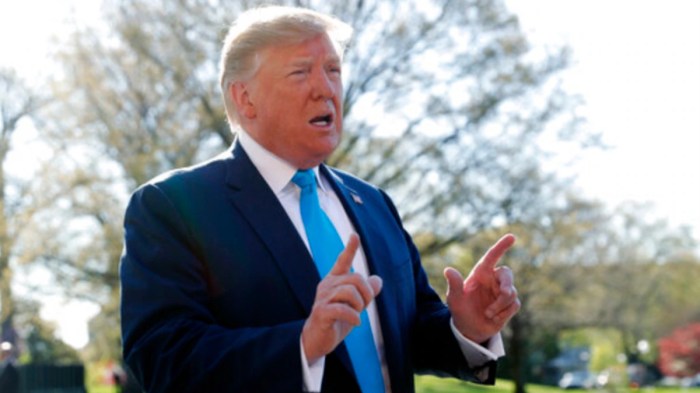
The Supreme Court’s role in upholding the rule of law is often scrutinized, particularly when political pressure mounts. Trump’s repeated calls for the overturning of judicial decisions have ignited debate among legal scholars, political scientists, and commentators, who offer varying perspectives on the potential consequences of such actions. Understanding these diverse viewpoints is crucial for assessing the long-term implications of this dynamic interaction between the judiciary and the executive branch.Expert opinions often highlight the delicate balance between upholding judicial independence and responding to public sentiment.
The potential for politicization of the judiciary is a significant concern, and experts analyze the effects of such actions on the public’s trust in the legal system. These perspectives vary significantly, ranging from accusations of undermining the judiciary to arguments about exercising legitimate political influence.
Legal Scholars’ Perspectives on Judicial Independence
Legal scholars across the political spectrum frequently discuss the importance of judicial independence. They emphasize that the judiciary’s role is to interpret the law impartially, free from political pressures. The perception of bias, real or perceived, can erode public trust in the legal system.
- Professor X, a renowned constitutional law scholar at Yale University, argues that “the Supreme Court’s legitimacy hinges on its perceived impartiality. Attempts to pressure the court undermine this crucial aspect of American democracy.” Professor X’s research focuses on the historical precedents of judicial review and its relationship with democratic governance.
- Conversely, Professor Y, a legal historian at Harvard, contends that “judicial review is a dynamic process, and the executive branch does have a right to influence the Court’s interpretation of laws, particularly through the appointment process.” Professor Y’s work examines the evolution of the relationship between the executive and judicial branches throughout American history.
Political Scientists’ Analyses of Political Implications
Political scientists often examine the broader political ramifications of such interventions. They analyze the potential for eroding public trust in the judiciary, and the implications for the balance of power within the government.
- Dr. Z, a political scientist specializing in presidential behavior, observes that “Trump’s actions could set a dangerous precedent, potentially emboldening future administrations to challenge judicial decisions they disagree with.” Dr. Z’s analysis draws on historical examples of presidential attempts to influence the judiciary and their impact on political stability.
- Professor A, a political theorist at Columbia University, notes that “the politicization of the judiciary could lead to a decline in public confidence in the rule of law. This has significant consequences for the stability and predictability of the legal system.” Professor A’s research emphasizes the societal impacts of such actions, focusing on the implications for civil liberties and democratic processes.
Categorized Expert Opinions
| Expert | Affiliation | Key Argument |
|---|---|---|
| Professor X | Yale University | Judicial independence is crucial for public trust in the legal system. |
| Professor Y | Harvard University | The executive branch has a right to influence judicial interpretation through the appointment process. |
| Dr. Z | Political Science Expert | Trump’s actions could set a dangerous precedent for future administrations. |
| Professor A | Columbia University | Politicization of the judiciary could lead to a decline in public confidence in the rule of law. |
Final Conclusion
In conclusion, Trump’s increasing calls for the Supreme Court to overrule judges represent a significant challenge to the separation of powers. The potential outcomes, ranging from reinforcing existing precedents to reshaping the legal landscape, are far-reaching. This discussion underscores the importance of understanding the historical context, legal arguments, and political implications surrounding this issue. The future of the American judicial system hangs in the balance.

